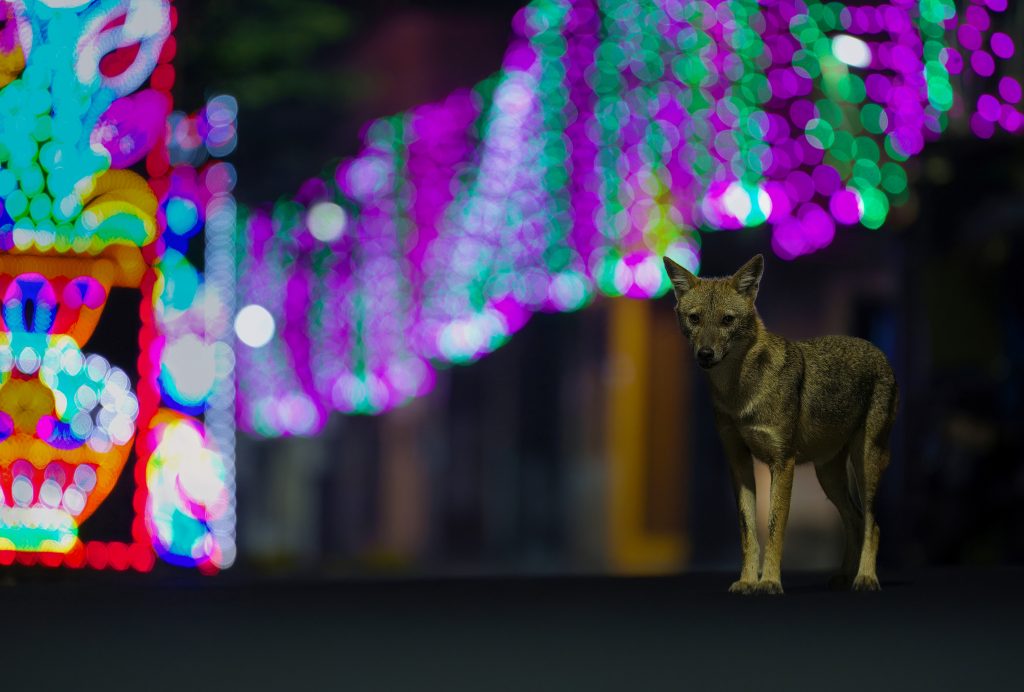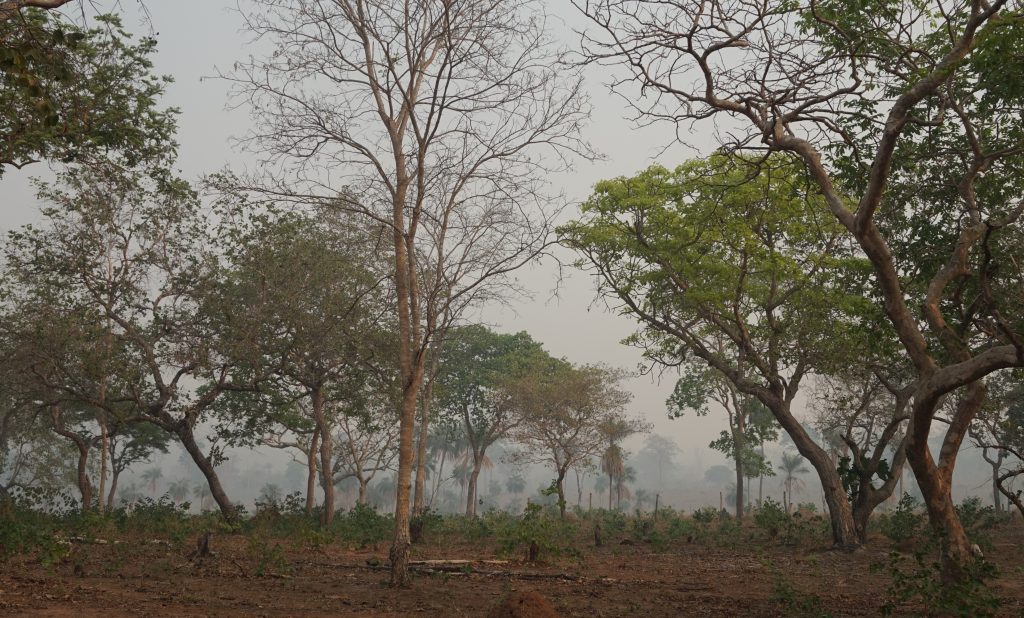Bird marketplaces are important sites for people to socialise, work and interact with birds—despite the deplorable conditions in which the birds are kept. Markets are usually structured, with rarer birds in the back and more common species displayed out front, and with a plethora of species being traded for different reasons. I hope to showcase these stories and highlight the complex web of species entangled in the songbird trade in Indonesia.
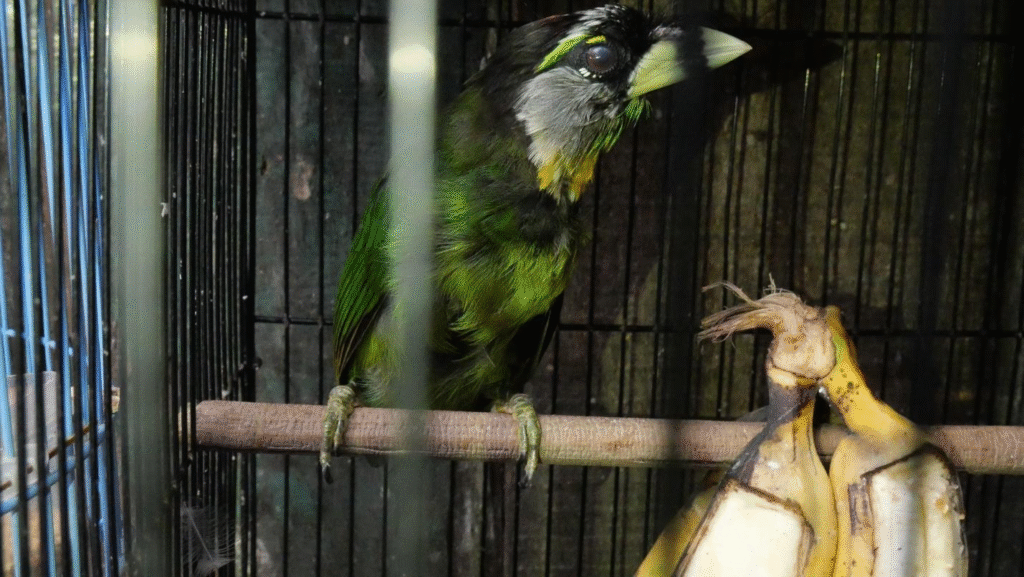
The Fire-tufted Barbet, a frugivore, is an unusual species that has found its way into the market. Its vibrant colours and distinctive whiskers may attract consumers. Still, the potential large-scale removal of these birds—which play a crucial role in seed dispersal in forested areas—from the wild could have severe ecological consequences, especially since the trade volume remains unknown. This underscores the urgent need for conservation efforts and a deeper understanding of the impacts of bird trade on ecosystems.
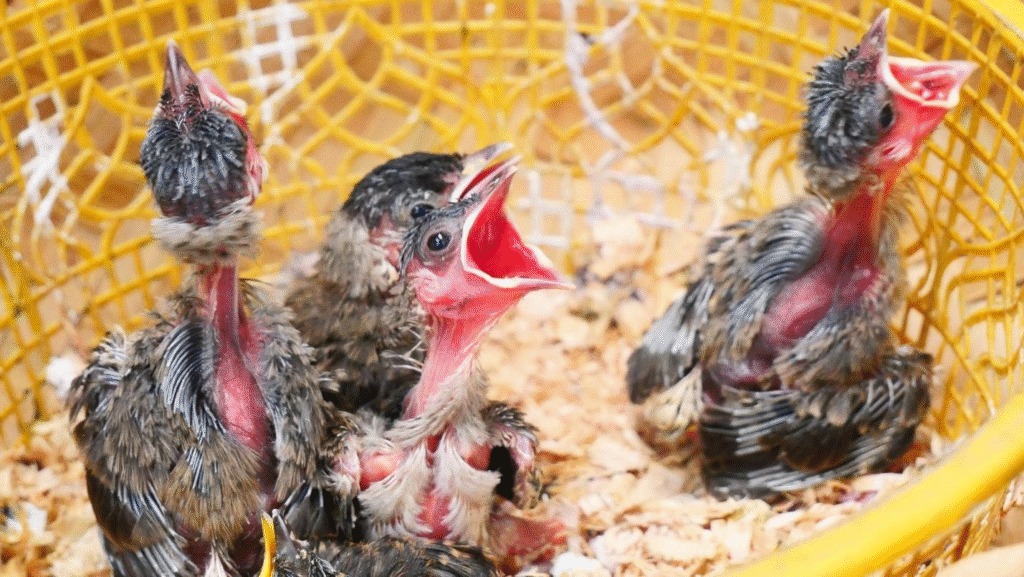
Black-headed Bulbul chicks squawk and chirp in the market. Chicks are easy to capture in the wild and have an appeal as being cute. They can hatch from eggs taken from nests or be ranched—a process where chicks are reared in captivity after being removed at a young age from the nests. Removal of chicks and eggs from the nests can negatively impact their population in the wild and the well-being of the chicks taken.
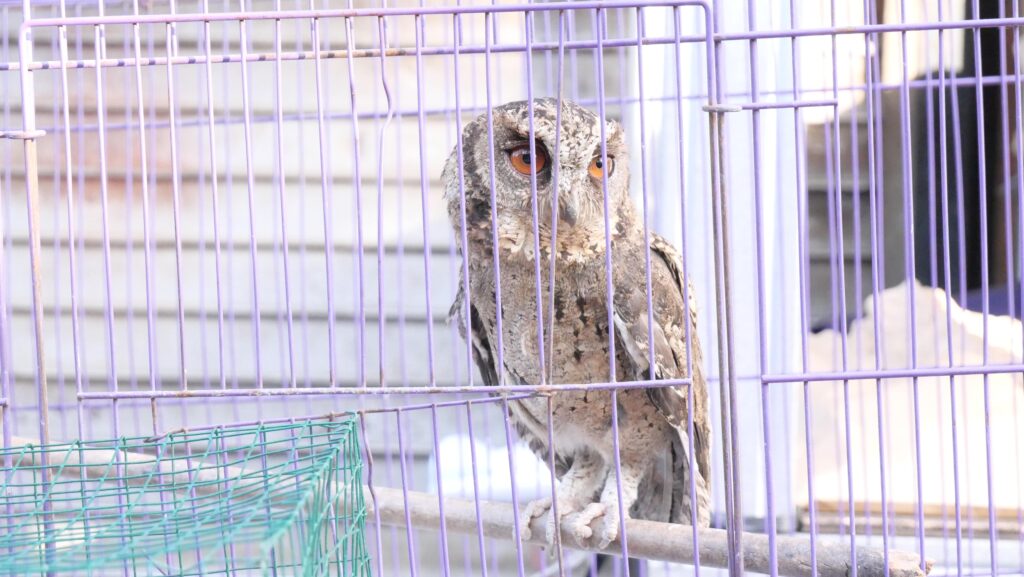
Owls are important portents among pet owners in Indonesia. Some research suggests that the demand for owls has increased since the rise of film franchises such as Harry Potter. However, this demand and increase are yet to be shown as significant. The Sunda Scops-owl makes for an interesting case study since many morphs and juveniles are sold. Consequently, it is difficult for people to identify individuals belonging to this species in the market. This includes members of civil society and law enforcement who form the frontline for species identification in wildlife trade.
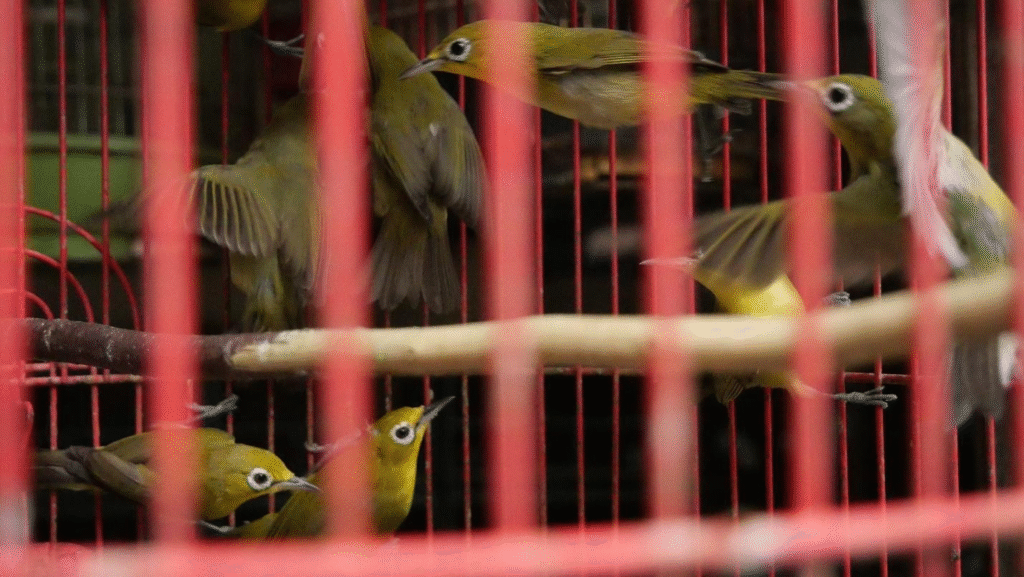
A group of Lemon-bellied White-eyes fly around their cage. The white-eye family—specifically the Zosterops genus—is common in trade. Different species in this genus are often sold together as it is difficult to distinguish them from each other. Populations of species such as the Javan White-eye have crashed due to a high level of trade, resulting in lookalike species within the same genus getting subsumed into the trade.
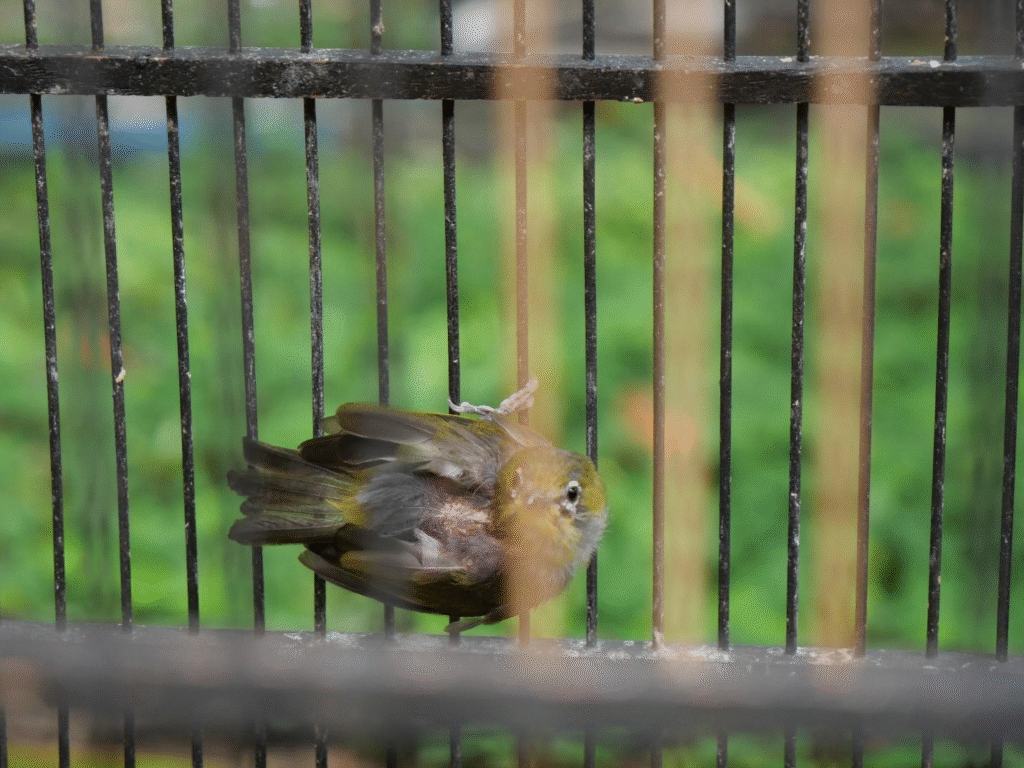
Here, we can see another white-eye species, possibly a Sangkar White-eye, though it could also be Hume’s White-eye. Since the bars obscure the face, it’s difficult to assess the minute differences that differentiate some species. The loss of feathers on this individual’s shoulders is likely due to glue or rubber sap that is sometimes coated on the branches of trees to trap wild birds when they perch there—often attracted by pre-recorded bird calls. This adhesive is either removed with kerosene or oil, but the bird’s feathers get ripped out if it cannot be safely extracted from the trap. Perhaps as a result of stress (or other conditions), sometimes the feathers are still in the process of regrowing when the bird makes it to the market.
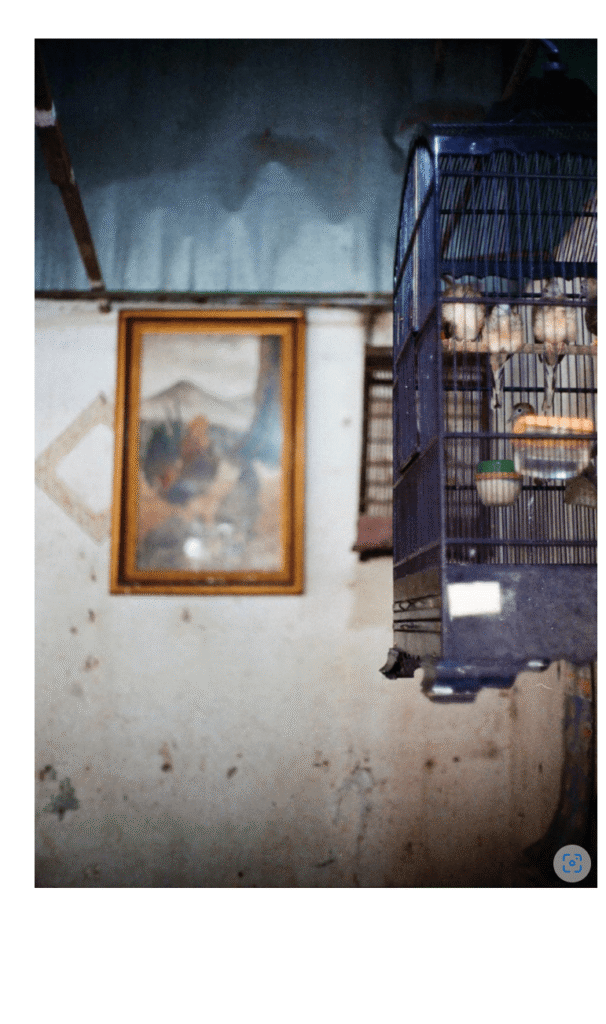
This final photo is slightly blurry, captured on film, and involves two important bird species in Indonesian human-bird relations, one is the cockrel (used in cockfights across Indonesia) and the zebra dove, the first documented species to be used in singing competitions in Indonesia. The zebra dove is commonly bred in captivity and used for singing competitions and is particularly popular in central Java. Even though it is bred in captivity and can be found in large numbers, the species is under pressure as birds are also caught in the wild to supply breeding operations.




